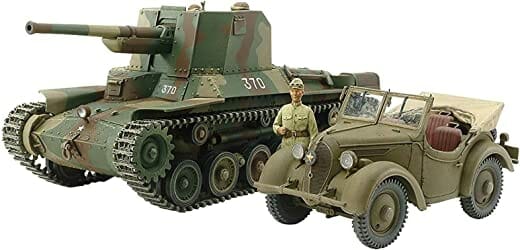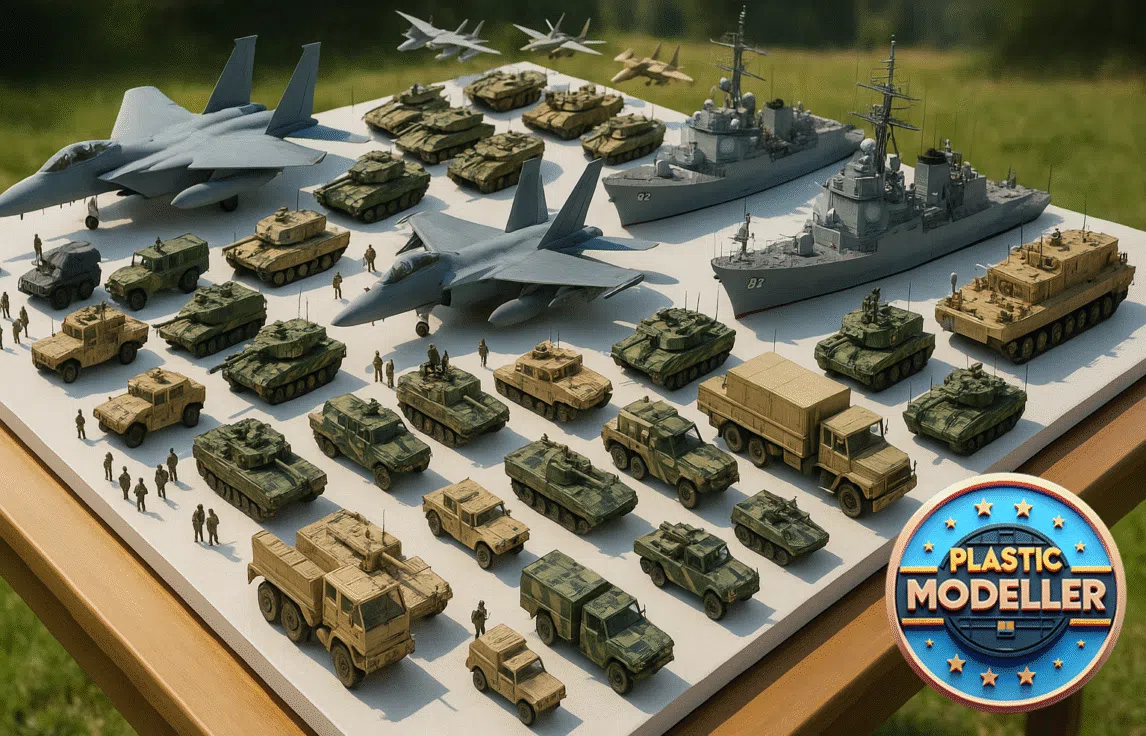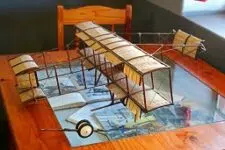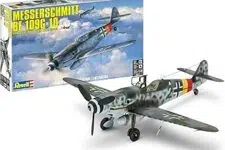Table of Contents
Why Building Plastic Models Helps You Gain Knowledge?
If you are in the military or a techie mechanic, building plastic models can gain insights into these factors.
Improving fine motor skills: Building plastic models requires patience and dexterity, which can help improve fine motor skills and hand-eye coordination.
Enhancing spatial awareness: Building plastic models often have intricate parts that need to be assembled, which can help improve spatial awareness and problem-solving skills.

Encouraging critical thinking: Building plastic models often requires following instructions and making decisions about which parts to use and how to put them together. This process can encourage critical thinking and help develop problem-solving skills.
Understanding concepts: Building plastic models of things like vehicles, ships, or buildings can help people understand how these objects are constructed and how they work. This can help deepen their understanding of the concepts behind the objects.
Promoting creativity: Building plastic models can also be a form of art and creativity. Building models can allow individuals to express their creativity by painting, adding custom parts, or creating unique designs.
Overall, building plastic models can be a fun and educational hobby that can help people learn and develop new skills while having fun.

Lets Start Building Plastic Models
Steps in Building Plastic Models. And Model Building Kits For Beginners, too.
- Gather the necessary tools and supplies: Before starting, you will need a few basic tools such as plastic cement, a hobby knife, sandpaper, and paint. It is also helpful to have a work area with good lighting and a flat surface to work on.
- Read the instructions carefully: The instructions for building a plastic model kit usually come in the form of a booklet or a set of sheets. Make sure to read them carefully and understand each step before starting to build.
- Clean and prepare the parts: Before you start to assemble the model, it is important to clean any mold lines and flash (excess plastic) from the parts. This will make assembly easier and give you a smoother finish.
- Test fit the parts: Before gluing the parts together, test fit each piece to ensure a proper fit. If necessary, use sandpaper to remove any burrs or rough edges that could interfere with a tight fit.
- Start with the main assembly: Once you have tested the fit of the parts, start by assembling the largest pieces first, working your way down to the smaller pieces. Use plastic cement to glue the parts together, making sure to follow the instructions carefully.
- Let the glue dry: After gluing the parts, it is important to let the glue dry completely before handling the model. The drying time for plastic cement can vary, so be sure to read the instructions on the bottle and give the model enough time to dry.
- Sand and clean the model: Once the glue has dried, use sandpaper to remove any rough spots and give the model a smooth finish. Clean the model thoroughly to remove any dust or residue before painting.
- Paint the model: The final step is to paint the model according to your personal preference. You can use either brush-on or spray paint, but make sure to follow the instructions on the paint can carefully.

By following these steps, you should be building plastic models successfully and enjoy the process.
Plastic Modeling Techniques. Further Tips on building plastic model kits.
- Gather the necessary tools and supplies: You will need plastic cement, which is a special glue designed specifically for plastic model kits. A hobby knife is also essential for cutting and trimming parts, as well as for removing any flash (excess plastic) from the parts. Sandpaper will come in handy for smoothing out rough edges and removing mold lines. And, of course, you will need paint to finish your model.
- Read the instructions carefully: Model kit instructions are usually illustrated and provide step-by-step guidance for building the model. It is important to read the instructions thoroughly and understand each step before starting to build. This will help you avoid any mistakes and ensure a successful outcome.
- Clean and prepare the parts: Before assembling the model, make sure to clean any mold lines and flash from the parts. This will make assembly easier and give you a smoother finish. You can use a hobby knife or sandpaper to remove any rough spots and make the parts fit together properly.
- Test fit the parts: Before gluing the parts together, it is important to test fit each piece to ensure a proper fit. If necessary, use sandpaper to remove any burrs or rough edges that could interfere with a tight fit. This will also help to ensure a smoother finish and prevent any gaps or misalignments in the final model.
- Start with the main assembly: Once you have tested the fit of the parts, start by assembling the largest pieces first, working your way down to the smaller pieces. Use plastic cement to glue the parts together, making sure to follow the instructions carefully.
- Let the glue dry: After gluing the parts, it is important to let the glue dry completely before handling the model. The drying time for plastic cement can vary, so be sure to read the instructions on the bottle and give the model enough time to dry.
- Sand and clean the model: Once the glue has dried, use sandpaper to remove any rough spots and give the model a smooth finish. Clean the model thoroughly to remove any dust or residue before painting.
- Paint the model: The final step is to paint the model according to your personal preference. You can use either brush-on or spray paint, but make sure to follow the instructions on the paint can carefully. To achieve a smooth finish, you may need to apply multiple coats of paint, allowing each coat to dry completely before applying the next one.

Building plastic models can be a fun and rewarding hobby, but it does require patience and attention to detail. By following these basic plastic model building tutorials, you can build a high-quality model that you will be proud to display.
Displaying Of Model Kits
Lets not your building plastic models projects go to waste. There are several ways to display a collection of model kits:
- Shelves or display cases: One option is to use shelves or display cases to showcase your models. This is a good option for larger models and collections, and it allows you to see your models from all angles. You can choose from a variety of materials, including glass, wood, or acrylic, depending on your preferences and budget.
- Tabletop displays: Another option is to use tabletop displays, which are ideal for smaller models or collections. Tabletop displays come in a variety of sizes and styles, and they allow you to display your models at eye level.
- Shadow boxes: Shadow boxes are another option for displaying models, especially smaller ones. Shadow boxes are framed boxes with a deep base that you can use to create a diorama or a themed display.
- Wall-mounted displays: For a more dramatic look, you can choose to mount your models on the wall. This is a good option for larger models or collections, and it allows you to create a focal point in a room.

Regardless of how you choose to display your models, it is important to take steps to protect them from dust and damage. You can use clear plastic or glass covers to protect your models, or you can use UV-resistant materials to prevent fading over time.

When it comes to displaying your model kit collection, the most important thing is to choose a method that works for you and your space, and that showcases your models in the best light. Building plastic models does requires the steps above. With a little creativity and attention to detail, you can create a beautiful and impressive display that you will enjoy for years to come. Do not let your building plastic models jobs goes unmaintaned.
Maintaining The Display of Model Kits Over a Long Period Of Time
After all your projects in building plastic models, there comes the question of maintenance. To maintain the display of model kits over a long period, it is important to follow a few simple steps:
- Dust regularly: Dust can settle on your models and display cases, so it’s important to dust them regularly to keep them looking their best. You can use a soft, clean cloth or a microfiber duster to gently remove dust and debris.
- Keep models away from direct sunlight: Exposure to direct sunlight can cause fading and damage to your models over time. Keep your models and display cases away from windows and direct sunlight to prevent this from happening.
- Avoid handling the models: While it may be tempting to handle your models, doing so can cause damage to the paint and other delicate parts. Instead, try to handle the models as little as possible, and avoid touching the painted surfaces as much as you can.
- Store models properly: When you’re not displaying your models, it’s important to store them properly to prevent damage. Store models in a dry, cool place, and avoid exposing them to extreme temperatures or humidity. Consider using protective storage containers, such as plastic bags or storage boxes, to help keep your models in good condition.
- Monitor temperature and humidity: If you live in an area with high humidity or temperature fluctuations, you should monitor the temperature and humidity levels in your display area. High humidity can cause damage to your models, so it’s important to keep the humidity level low to protect your models from damage.

The Unique Satisfaction.
By following these steps, you can help maintain the display of your model kits over a long period, preserving their beauty and value for years to come.
Scale models are not manufactred for kids or young people only, but model building kits for adults, too. So, have you start building plastic models yet?







